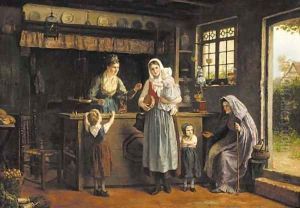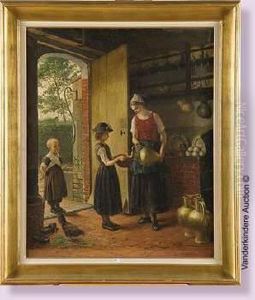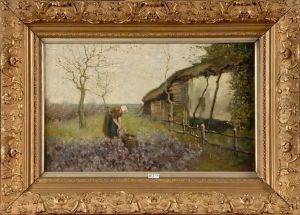Heyermans Paintings
Franz Theodoor Heyermans, often recognized simply as Heyermans, was a notable Belgian painter born on August 16, 1837, in Antwerp. His work primarily focused on scenes of daily life, encapsulating the social realist movement of the 19th century. Heyermans was deeply influenced by the socio-economic conditions of his time, and his paintings vividly depict the struggles and joys of the working class.
Educated at the Royal Academy of Fine Arts in Antwerp, Heyermans was part of a family steeped in artistic tradition; his brother, Charles Heyermans, was also a painter, and his other brother, Emanuel, was a dramatist. This environment nurtured his artistic inclinations from a young age.
Throughout his career, Heyermans remained devoted to portraying the lives of fishermen, peasants, and other working-class individuals. His works are characterized by their emotional depth and technical skill, often highlighting the dignity and resilience of his subjects amidst their challenging circumstances.
Heyermans' contributions to art were recognized during his lifetime, and he became a respected figure within the Belgian art community. However, his work gained wider acknowledgment posthumously, as art historians and critics began to appreciate the significance of his social commentary through art.
He passed away on December 29, 1892, in Antwerp, leaving behind a legacy that continues to be celebrated for its profound empathy and realism. Today, his paintings can be found in various museums across Belgium, serving as poignant reminders of the country's social history and the timeless appeal of realism in art.













